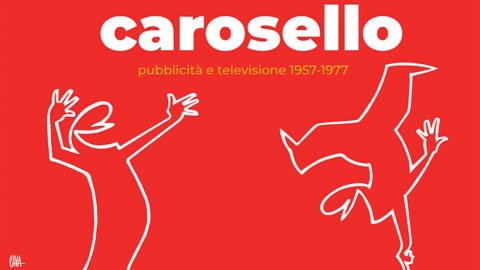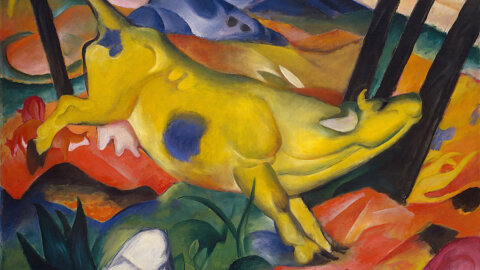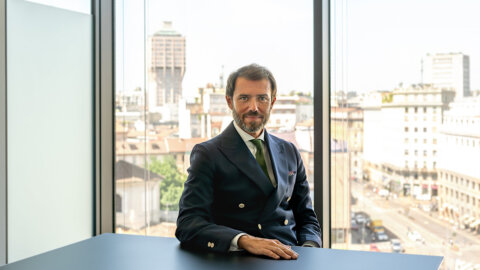La mostra segue quella del 2017 dedicata alla storia della pubblicità dal 1890 al 1957 e che fu l’occasione per ripercorrere la nascita e l’evoluzione della comunicazione pubblicitaria dai primi schizzi ai bozzetti, fino al manifesto stampato.
In quell’occasione fu possibile ammirare le creazioni di cartellonisti come Leonetto Cappiello, Sepo, Marcello Dudovich o Plinio Codognato. Mentre in questa vi troviamo l’evoluzione della storia della grafica pubblicitaria e del manifesto con grandi designer come Armando Testa, Erberto Carboni, Raymond Savignac, Giancarlo Iliprandi, Pino Tovaglia, affiancandola a un nuovo media – la televisione – che con Carosello mosse i primi passi nel mondo della pubblicità.
Manifesti di quel periodo, affiancati ai bozzetti e agli schizzi, e una na serie di schermi distribuiti nelle sale espositive, di ripercorre l’unicità e l’innovazione degli inserti pubblicitari di Carosello, vincolati al tempo a rigide regole di novità e lunghezza. Così l’universo dei personaggi animati che sono nati con la televisione, come La Linea di Osvaldo Cavandoli, Re Artù di Marco Biassoni, Calimero di Pagot o Angelino di Paul Campani, fino alla moltitudine di personaggi nati dalla matita di Gino Gavioli. Bozzetti, schizzi, rodovetri, storyboard sono gli elementi a complemento della serie di cartoni animati presentati in mostra a cui si aggiungono gli inserti pubblicitari in cui sono protagonisti i più importanti cantanti dell’epoca da Mina (Barilla) a Frank Sinatra, da Patty Pravo a Ornella Vanoni e Gianni Morandi o grandi attori come Totò, Alberto Sordi, Virna Lisi, Vittorio Gassman e grandi registi come Luciano Emmer, Mauro Bolognini, Ettore Scola, i fratelli Taviani, oltre a personaggi tv popolarissimi come Mike Bongiorno, Pippo Baudo, Raffella Carrà, Sandra Mondaini e Raimondo Vianello.
Una selezione dei più importanti oggetti promozionali dell’epoca come l’ippopotamo Pippo, o i gonfiabili di Camillo il Coccodrillo, della Mucca Carolina, di Susanna tutta Panna completano la presentazione della pubblicità dei primi trenta anni della seconda metà del Novecento. Carosello, infatti, ebbe successo anche perché creò e impose i suoi caratteristici personaggi.
La fiabesca rivoluzione dei consumi – La pubblicità di quel periodo – dal 1957 al 1977, non solo televisiva – introdusse una vera e propria rivoluzione nel patrimonio culturale e visivo di tutti. Carosello era trasmesso in bianco e nero, ma per gli italiani era ricco di colori. Aveva infatti i colori del consumo, i colori di un nuovo mondo di beni luccicanti che si presentavano per la prima volta sulla scena sociale: lavatrici, frigoriferi, automobili, alimenti in scatola, etc.
Carosello non era semplicemente pubblicità, ma un paesaggio fiabesco dove regnavano la felicità e il benessere, un paesaggio estremamente affascinante per una popolazione come quella italiana che proveniva da un lungo periodo di disagi e povertà. Un paesaggio onirico che esercitava un effetto particolare nei piccoli paesi, nelle campagne e nelle regioni più arretrate, dove rendeva legittimo l’abbandono di quell’etica della rinuncia che apparteneva alla vecchia cultura contadina, in favore dell’opulenza della città e dei suoi beni di consumo.
Immagine: Locandina. Osvaldo Cavandoli, La Linea © 2019 CAVA/QUIPOS





